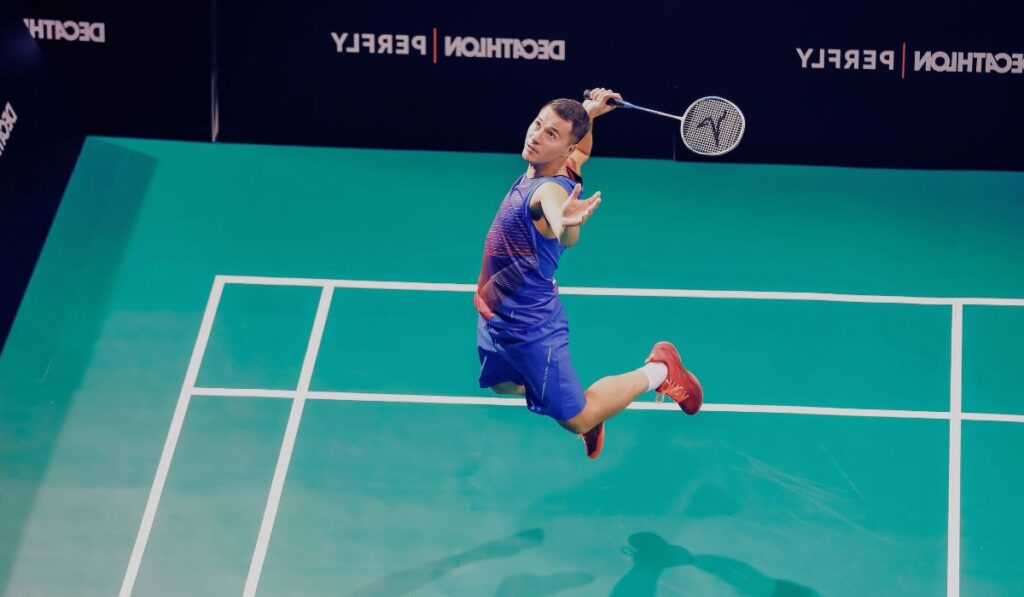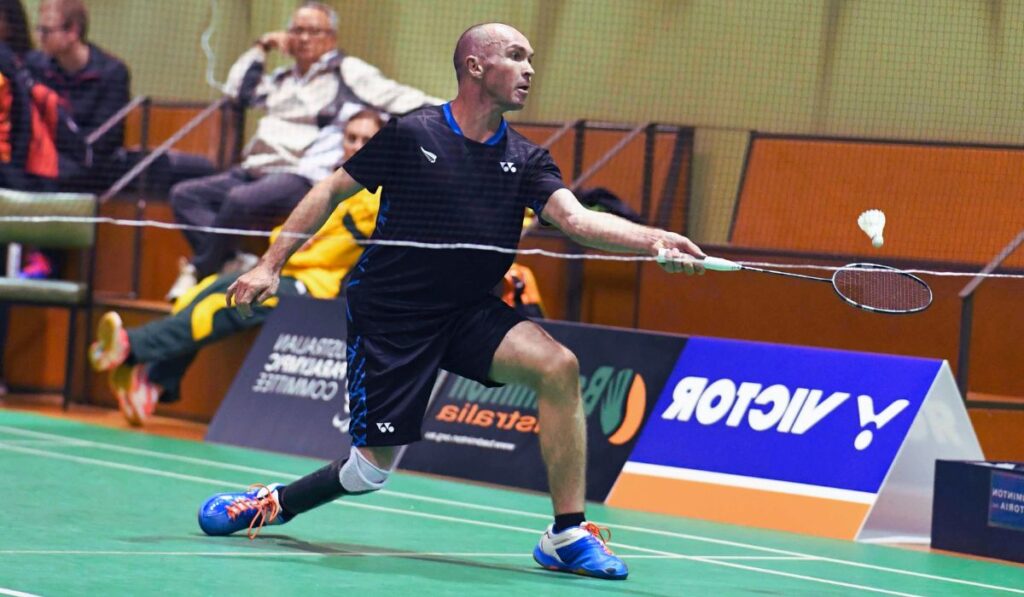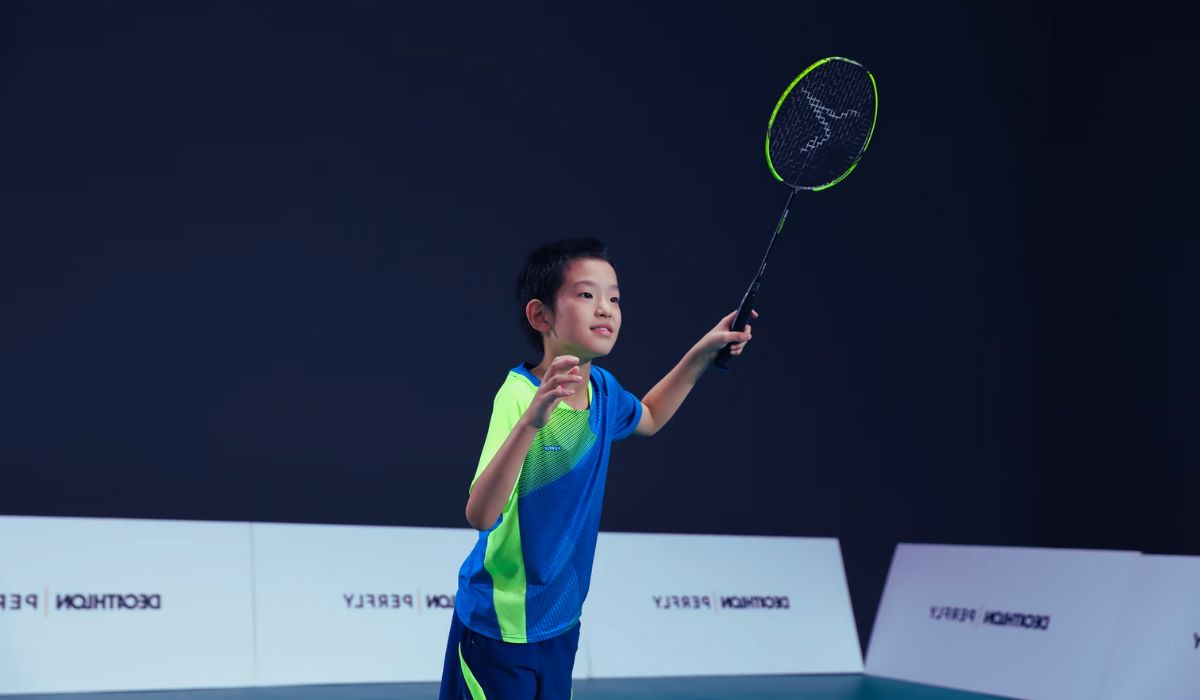Many retired juniors struggle when they turn 20—but that’s not a rule of nature. Training programs often shift too quickly once age categories close, yet intelligent coaching continues skill-building indefinitely. Once you understand that the badminton age limit begins and ends differently for everyone, you realize you can keep improving long after official brackets dissolve.
Emotional Struggles Around Age and Performance in Badminton
For many players, growing older doesn’t just bring physical changes—it brings emotional doubt. The fear of not being “fast enough” or “fit enough” compared to younger opponents can weigh heavy. It’s easy to get discouraged when your smashes don’t sting as hard or your reflexes aren’t razor-sharp like they used to be. This is where the mental aspect of the badminton age limit becomes more personal than official. The internal pressure to keep up can often hurt more than an actual loss. But learning to acknowledge and overcome these mental hurdles is the key to unlocking longer, more joyful playing years. Emotional resilience, not youth, is often what separates those who quit too early from those who evolve.
How Regular Training Can Override the Badminton Age Limit
Consistency is the most underrated training technique. Even as your body ages, regular practice keeps your joints lubricated, your mind alert, and your timing sharp. Many older athletes skip sessions, assuming they can’t compete. But those who maintain a disciplined training routine see surprisingly strong results. Whether it’s light footwork drills, shadow play, or strength-building exercises, consistency slows down decline and keeps your body tuned. You don’t need to train like a teenager. But by keeping your muscles and reflexes engaged, you can quietly outlast others who gave up too soon because they feared the badminton age limit would catch up with them.
Using Strategy and Precision to Beat Younger Players
With age comes wisdom—and that can be your greatest weapon on the court. While younger players may leap higher and run faster, they often rely on raw athleticism more than thoughtful strategy. Experienced players know how to place a shuttle, when to slow the game down, and how to make their opponent move inefficiently. These elements are game changers. In many matches, the player who wins isn’t the fastest or strongest, but the smartest. The badminton age limit doesn’t affect your ability to think a shot ahead, manipulate the rally, and create pressure through court control. These skills only sharpen with experience.
The Rise of Senior Badminton Leagues Around the World
Across countries like India, Malaysia, the UK, and Japan, senior badminton circuits are thriving. These leagues welcome players aged 35 and above and group them into fair age categories. The matches are competitive, but they’re also community-oriented, filled with laughter, sportsmanship, and camaraderie. These environments strip away the pressure of youth-driven comparison and focus more on effort, enjoyment, and friendly rivalry. In such spaces, the badminton age limit becomes a beautiful benchmark rather than a burden. It opens doors to new friendships, fresh motivation, and lifelong engagement with the game.

Turning Your Passion into Purpose Through Mentorship
One of the most fulfilling paths for aging players is mentorship. Sharing your journey, skills, and discipline with a younger generation is a powerful way to stay relevant and fulfilled in the sport. Whether you coach at a local academy or mentor a single aspiring player, your legacy expands beyond titles or tournaments. And the best part? You don’t need to be in peak physical shape to make an impact. Knowledge, encouragement, and presence matter even more. If you’re struggling with how the badminton age limit affects your own playing days, redirecting your passion toward mentoring could redefine your relationship with the sport forever.
Injuries and Recovery Time Increase—but They Don’t Have to Stop You
It’s true—recovery takes longer as you age. Sprains that once healed in days may now take weeks. Soreness might linger after intense matches. But this doesn’t mean the end. With proper warm-up routines, strength training, hydration, and physiotherapy support, you can still play hard and recover smart. The badminton age limit doesn’t ban older players from the court—it just demands smarter recovery strategies. Embrace ice baths, stretching routines, active rest, and balanced nutrition. Many elite athletes in their 40s and even 50s still compete because they respect recovery as much as training.
Why Motivation Changes with Age—And How to Channel It
When you’re younger, motivation is often driven by recognition—trophies, ranking points, admiration. But as you age, that drive shifts. It becomes about inner satisfaction, routine, fitness, and joy. If you’ve been feeling uninspired, maybe you’re clinging to the wrong kind of motivation. Reflect on what badminton really gives you—peace, structure, identity. The badminton age limit isn’t a countdown to irrelevance. It’s a reminder that your “why” can evolve. Let your reason to play shift with you. That’s how passion remains sustainable and meaningful.
Playing Doubles as a Smart Alternative for Older Players
Singles matches demand endurance, lung-busting rallies, and quick lateral movement. For players in their 40s and beyond, switching to doubles can make the game more enjoyable without compromising the competitive spirit. In doubles, positioning, teamwork, and communication outweigh raw speed. It allows you to stay active without pushing your body to its limit. If the badminton age limit is beginning to test your stamina, consider building a solid doubles partnership. You’ll still experience high-quality rallies, tight games, and tournament action—just with smarter physical management.
Age-Specific Equipment Can Improve Performance and Prevent Injury
As your body changes, so should your gear. Lightweight rackets with medium flexibility reduce joint stress. Shoes with extra arch support prevent ankle strain. Even strings and grip sizes can be customized to suit slower reaction times and gentler movements. Ignoring these adjustments only accelerates wear and tear. If you’re committed to extending your playing career beyond the supposed badminton age limit, don’t rely on the same equipment you used in your 20s. Upgrade with your age, and your body will thank you every time you step on court.
It’s Never Too Late to Be a Badminton Player
You might have started late. You might be returning after a long break. You might feel like your peak is behind you. But here’s the truth—badminton doesn’t judge. It welcomes anyone with heart, hustle, and hunger. The badminton age limit might limit your eligibility for some championships, but it can’t stop you from chasing your personal best, inspiring others, or finding peace in a good rally. The court is still yours. The game is still yours. And if you still love it, you’re right where you belong.
Injury Management Shapes Career Length
A serious ankle sprain or tendon issue at 22 can shorten a career faster than any age rule. Smart players prioritize recovery, stretching, and physiotherapy. By maintaining mobility and strength, they outlast peers who ignore setbacks. In truth, your personal badminton age limit may mirror how well you prevent and address injury, rather than how many years you’ve lived.
Balancing Life’s Demands with the Court
Once life pressures mount—career, family, work—many mid-twenties players slow down or drop competitive play. That shift is emotional, not physical. Those who manage to balance these demands with passion often continue playing into their 30s or 40s in senior events. Ultimately, the official badminton age limit only applies where you let it limit you.
Recreational Leagues Expand Age Horizons
Local and community leagues often host 40+, 50+, even 60+ categories. These allow players to compete in fitness tournaments and casual events with peers. The rules remain, but the pace softens. In these leagues, badminton age limit fades into irrelevance, replaced by a sense of enjoyment and belonging.
The Magic of Role Models Beyond 30
Players like Lin Dan, Carolina Marin, and Tai Tzu Ying inspire through sustained excellence. Watching them maintain speed, creativity, and match-winning instincts after 30 creates hope. They remind us that even if the official badminton age limit fades, talent and training can thrive regardless of years.
Mental Toughness Trumps Physical Youth
As legs get heavier over time, mind sharpness grows. Veteran players often win grueling matches through experience, anticipation, and mental discipline. Those qualities matter more when physical edge diminishes. A well-honed mindset overcomes youth, redefining the badminton age limit as a mark of resilience.
Senior Coaching Roles Keep Players Engaged
Many former elites and serious amateurs find fulfillment by coaching, refereeing, or mentoring juniors. They stay connected to the sport beyond competitive age limits. The shift from player to guide isn’t a loss—it’s transformation. For them, the badminton age limit becomes a doorway to new purpose.
Emotional Rewards Beyond Medals
Winning medals on courts matters, but so does self-improvement, friendships, and memories. A 45‑year‑old defeating a younger opponent through tactical smarts feels victory beyond the rules. In that sense, the badminton age limit doesn’t stop fulfillment—it simply reshapes its form.
Training Smart at Every Age
Players in their 30s and 40s who ice their knees, monitor workload, and adapt technique often outperform younger players. They emphasize smart movement and strategy over sheer speed. They respect the body’s limits while maximizing its capabilities. That kind of play redefines the real boundary of age in the sport.
Why the Badminton Age Limit Shouldn’t Define Your Dreams
Many athletes wrongly assume that if they haven’t made it big by a certain age, their time is up. This belief is not only limiting but deeply unfair. In reality, some players discover their peak later in life. While international tournaments may impose age-based entry criteria, the badminton age limit does not apply to personal growth or passion. The game welcomes those who persist.
Rediscovering the Joy of Playing After 30
Turning 30 is often viewed as a turning point, but it can actually be a fresh start. At this stage, players often gain a new perspective on why they play. They aren’t just chasing trophies—they’re chasing that feeling of movement, competition, and focus. For many, badminton age limit becomes irrelevant once the game is rediscovered as a tool for joy, not just achievement.
The Role of Experience in Extending the Badminton Age Limit
Unlike raw speed or stamina, experience can’t be bought or rushed. Older players bring anticipation, court awareness, and game intelligence that often outmatch younger, faster opponents. This wisdom allows them to compensate for physical decline. In fact, one could argue that badminton age limit is more about mental endurance than physical age.

How Changing Nutrition Can Beat the Clock
Diet plays a pivotal role in how long an athlete can stay active. Players in their 40s who embrace anti-inflammatory foods, hydration, and recovery-focused nutrition often outperform less-informed younger athletes. By managing the body with intention, the badminton age limit can be extended in powerful ways that go beyond conventional limits.
Coaching Children Even After Your Playing Prime
Just because you’re not playing professionally doesn’t mean your badminton journey ends. Coaching provides an avenue for growth, influence, and emotional satisfaction. Many former players coach youth not only in techniques but also in discipline and sportsmanship. This continuation allows the badminton age limit to become a new beginning rather than an end.
Is There an Ideal Age to Quit? Not Necessarily
There’s no one-size-fits-all answer to when a player should step away from competition. Some retire in their 20s due to injury or burnout, while others thrive well into their 40s. The truth is, the badminton age limit depends more on how your body and mind feel, not the number on your birth certificate.
Adaptive Badminton Opens New Doors for All Ages
Adaptive or para-badminton is gaining recognition, and it’s not just for those with physical challenges—it’s also for aging players looking for a suitable format. These adaptations honor the love of the sport while recognizing the changing capabilities of players. In this format, the badminton age limit finds new flexibility and purpose.
Stories of Players Breaking Age Stereotypes
From local tournaments in India to senior leagues in Europe, countless stories exist of players breaking expectations. A 50-year-old winning his local doubles league. A mother of three returning to win district championships. These narratives prove that the badminton age limit isn’t written in stone—it’s carved in passion.
Reigniting Your Passion for Badminton After a Break
Whether you stopped due to college, work, family, or injury, returning to badminton later in life can be deeply fulfilling. The muscle memory, the court smell, the rush of rallies—it all comes back. If you’re wondering whether you’re too old, let go of that thought. The badminton age limit fades the moment you step back onto the court with heart.
Conclusion – Rewrite Your Own Limits
In the end, no ranking board, coach, or federation truly defines when your time is up. Only you can decide that. The badminton age limit is more of a guideline for tournaments, not a limit to your personal journey. Play for the thrill. Play for your soul. And if your legs move and your heart beats for the shuttle, you’re still in the game.
Legacy and Lifelong Passion
Those who treat badminton not as a deadline but as a lifelong journey often enjoy the sport longest. Whether their peak was at 19 or 31, they stay because the court still speaks to them. In the end, the badminton age limit isn’t a line—it’s a shifting horizon guided by passion, preparation, and personal pacing.


2 thoughts on “badminton age limit”